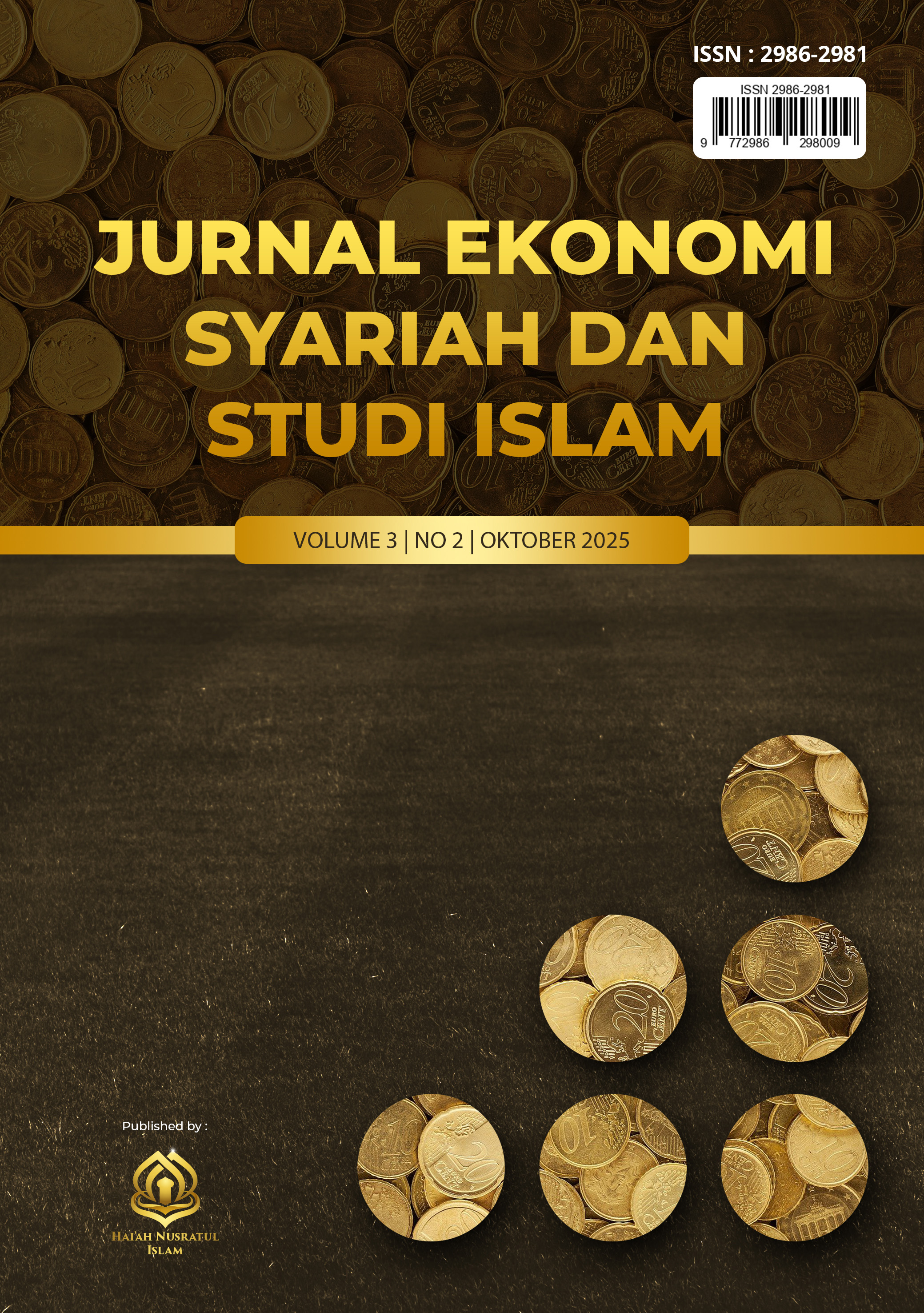PERAN KALIGRAFI ISLAM DALAM PENYEBARAN NILAI-NILAI SYARIAH
DOI:
https://doi.org/10.59548/je.v3i2.489Keywords:
Islamic Calligraphy, Sharia, Da'wah, Islamic Art, Islamic ValuesAbstract
Islamic calligraphy is not only a beautiful visual art but also an effective medium for conveying Islamic values, including the principles of sharia-based economics. This study aims to explore the role of Islamic calligraphy in disseminating the values of Islamic economics, such as justice, honesty, zakat, charity, and the prohibition of usury. A qualitative approach with a literature study method was employed to analyze the relationship between calligraphic art, sharia values, and its potential for education and da'wah. The findings reveal that Islamic calligraphy possesses aesthetic and symbolic power capable of capturing attention and delivering moral and spiritual messages profoundly. Various calligraphy works, inspired by verses from the Qur'an and hadith, often reflect sharia economic values, such as encouragement for charitable acts through zakat and charity, as well as warnings against the practice of usury. Furthermore, calligraphy serves as an educational tool for society to comprehend and internalize Islamic economic principles. This study concludes that Islamic calligraphy is not merely a cultural heritage but also a relevant medium for promoting sharia-based economic principles in Muslim communities. Further research is recommended to explore the integration of Islamic art with other fields in modern life.
References
Ashoumi, H., Malik, M. M., & Maulidiah, S. L. (2022). Implikasi Intrakurikuler Kaligrafi Dalam Pelestarian Seni Budaya Islam Di Madrasah Tsanawiyah Darun Najah Karangploso Malang. LISAN AL-HAL: Jurnal Pengembangan Pemikiran Dan Kebudayaan, 16(2), 235–254.
Kirom, S., & Hakim, A. L. (2020). Kaligrafi Islam Dalam Perspektif Filsafat Seni. Refleksi Jurnal Filsafat Dan Pemikiran Islam, 20(1), 55–67.
Lestari, N. H. P., Ichsan, Y., Sukriyanto, R., & Asela, S. (2021). Urgensi Seni Rupa Kaligrafi Dalam Pendidikan Islam. Palapa, 9(1), 126–136.
Mulyadi, M., & Wahid, A. S. (2024). Bisnis Kaligrafi Dalam Tinjauan Ekonomi Islam. Jurnal Ekshis, 2(1), 78–90.
Sari, D. N. I., Khoirunnisa, J. F., Hafidhdin, M., Anshori, A. A., & Ichsan, Y. (2023). Nilai-nilai Pendidikan Islam dalam Karya Seni Kaligrafi. Al-DYAS, 2(1), 74–85.
Syafi’i, A. G., & Masbukin, M. (2022). KALIGRAFI DAN PERADABAN ISLAM Sejarah dan Pengaruhnya bagi Kebudayaan Islam di Nusantara. Nusantara; Journal for Southeast Asian Islamic Studies, 17(2), 68.
Syarofah, A., Ichsan, Y., Kusumaningrum, H., & Rizky Nur Risam, M. (2022). Eksistensi Seni Kaligrafi Dalam Pendidikan Islam. Ta’dib: Jurnal Pendidikan Islam Dan Isu-Isu Sosial, 20(1), 1–12.
Downloads
Published
How to Cite
Issue
Section
Categories
License
Copyright (c) 2025 Nazira Aprilia Asty (Author)

This work is licensed under a Creative Commons Attribution 4.0 International License.
- Share — copy and redistribute the material in any medium or format for any purpose, even commercially.
- Adapt — remix, transform, and build upon the material for any purpose, even commercially.
- The licensor cannot revoke these freedoms as long as you follow the license terms.
Under the following terms:
- Attribution — You must give appropriate credit , provide a link to the license, and indicate if changes were made . You may do so in any reasonable manner, but not in any way that suggests the licensor endorses you or your use.
- No additional restrictions — You may not apply legal terms or technological measures that legally restrict others from doing anything the license permits.
Notices:
You do not have to comply with the license for elements of the material in the public domain or where your use is permitted by an applicable exception or limitation .
No warranties are given. The license may not give you all of the permissions necessary for your intended use. For example, other rights such as publicity, privacy, or moral rights may limit how you use the material.












 Jurnal Ekonomi, Syariah dan Studi Islam by
Jurnal Ekonomi, Syariah dan Studi Islam by 
